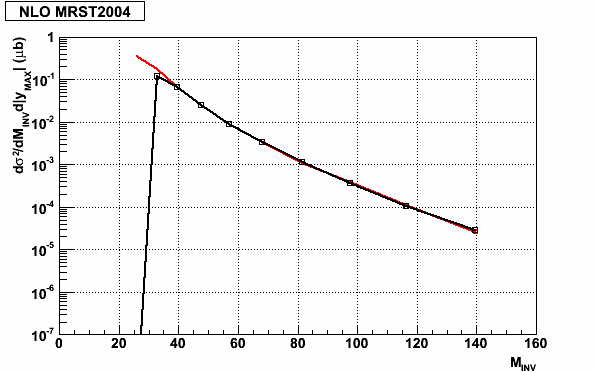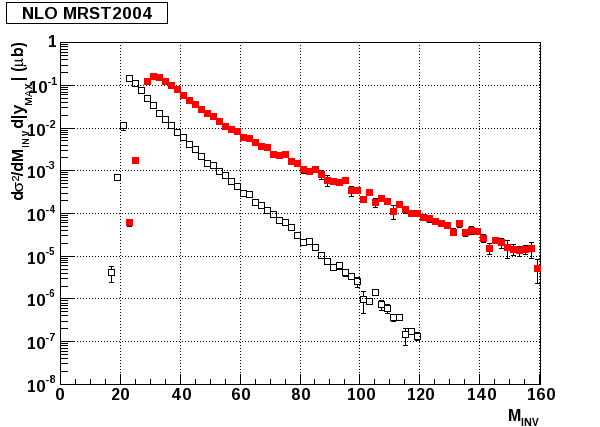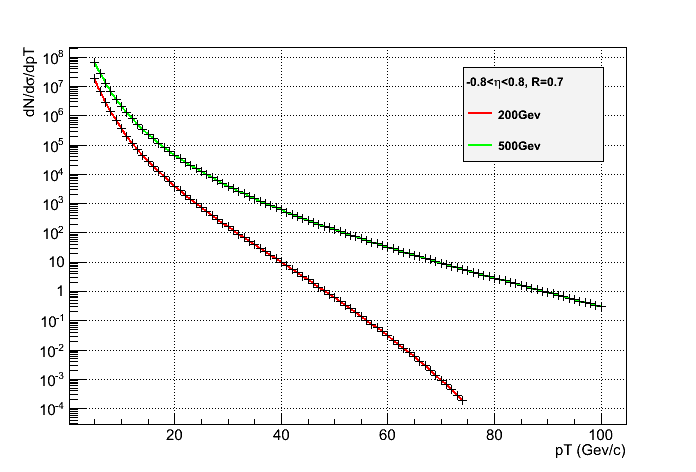Theortical Dijet Xsec Calculations
I realized that all my previous theory curves from DeFlorian's code were produced with inverted asymmetric pT cuts. The highest pT jet in the event should be required to pass the highest threshold (pT1) and the 2nd highest pT jet should be required to pass the lower threshold (pT2), but instead I had inverted pT1 and pT2. I investigated the changes this would cause in my plots below.
.gif)
Tai's data is shown in blue, the old inverted pT cuts are in black and the new cuts are in red. As expected the inversion of the cuts makes a very big difference near threshold, but has nearly zero effect above invM = 20.
.gif)
This affected Brian's antiKt curves in a similar way. The black is the old theory curve and the red is with the correct pT cuts. Again the effects are huge below invM = 20 and negligible above invM > 25 GeV.

Same behavior is shown for Grant's 500 GeV curve - black is old and red is new.
=======================================================================
NOTE!! Plots below this line were most likely run with inverted pT cut-offs
========================================================================
Daniel DeFlorian has incorporated the anti-Kt jet finding algorithm into his NLO dijet cross-section code. The following plots show the tests I did to make sure the new algorithm made sense and I am using the code correctly:
.gif)
Figure 1: Blue circles are Tai's Xsec values from his thesis. The red and black squares are the theory calculations. These agrees well with his thesis despite using MRST instead of CTEQ pdsfs. Note these curves only use midpoint cone with R = 0.7.

Figure 2: Comparison of Dijet cross-section at 200 GeV (black) and 500 GeV (red) for dijets with |y| < 0.8. This is for midpoint cone R = 0.7 algorithm. The differences are very consistent wtih the inclusive jet curves produced by Zilong from Vogelsang's code (see below).

Figure 3: Inclusive jet cross-sections at 200 and 500 GeV for R = 0.7 (can't remember if it is cone or midpoint...) Figure produced by Zilong.

Figure 4: The ratio of Cone/anti-kT algorithm at 500 GeV for R = 0.6. The increase is on average ~5% which is consistent with Vogelsang's findings for inclusive jets.
This implementation for anti-kT jets seems to be reasonable and the center of mass scaling is consistent wtih inclusive code.
- rfatemi's blog
- Login or register to post comments
